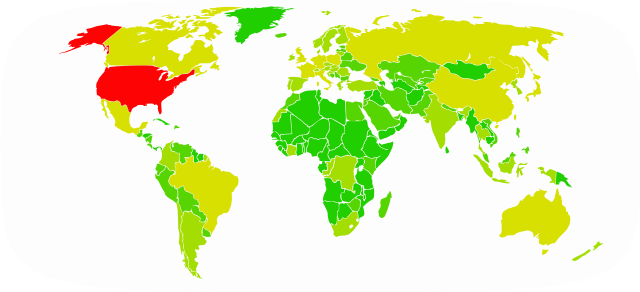The Internet started out as a small demonstration project — connect four computers at four universities to each other. That was the objective when the Department of Defense launched the first stage of ARPANet in 1969. Over the past 40-plus years, that kernel has grown into what we now think of as the Internet — a sprawling web connecting more devices than there are people on Earth. The Internet has transformed the way we watch video, listen to music, stay in touch, and get dates. It has both destroyed and created industries, and is posed to change the way we go to school, stay healthy, and even govern ourselves.
While what the Internet can do is fascinating and deserves the attention it gets, we shouldn’t forget about how we build it. What we think of today as “The Internet” is the result of wide range of often autonomous, overlapping, and interconnected projects initiated by government staff, techies, entrepreneurs, and students from around the world.
I went back through the history of development of the Internet, looking for ideas we might apply to other projects we are working on — especially projects that need creativity and innovation, want to reach large scale, and intend to have a big impact on society. The result was 12 tips described in Designing Open Projects: Lessons from Internet Pioneers, a paper I wrote for IBM’s Center for the Business of Government.

A map rendering of an emerging ARPANet in 1974. Photo credit: Yngvar. Used under Creative Commons license.
Here’s a summary of project management lessons that I gleaned from my review of Internet history:
- Let Everyone Play — Creativity, resources, and scale benefit from lots of participation.
- Play Nice — If you want lots of participation, you have to be positive and inviting.
- Talk About What You Are Doing While You Do It — It takes timely, process-oriented communications to enable coordination.
- Use Multiple Channels of Communication — Go to where people are and use their channels.
- Give It Away — The more you can share the results and products, the more impact you can have.
- Reach for the Edges — Ideas and creativity often come from people outside the core group, so encourage participants with other experiences and perspectives.
- Make It Work, Then Make It Better — Start with something simple and make sure it works.
- Make It Work, Then Standardize — As David Clark explained, “We reject: Kings, presidents ,and voting. We believe in: rough consensus and running code.
- Take Advantage of All Types of Organizations — Different types of organizations have different strengths so mix them together.
- Design for Participation — Structure the work so it is easy for people with different skills and resources to contribute.
- Increase Network Impact — Deliberately build networks and strive to connect networks-of-networks.
- Build Platforms — Instead of offering a solution to a specific problem, help people solve their own problems. As Tim O’Reilly pointed out, “Tim Berners-Lee didn’t develop hundreds of websites.” He designed a platform so that others could.

A map of the world by the countries with the most internet hosts. Photo credit: Powerkeys. Used under Creative Commons license.
A personal insight I was particularly excited by is realizing that Internet pioneers were demonstrating a project approach I think of as an “Open Project.” Open projects have porous boundaries for participation, communications, resources, and products. These projects don’t just produce open standards or open-source software, but also employ a collaborative, open process that helps generate innovation, accelerate learning, capture energy and enthusiasm, and produce widely available re-usable assets and can do it with global reach.
If we are able to reproduce the open project approach in sectors beyond the Internet — and I think we can — we will be better able to work together to tackle the most complex social problems on a large scale.
For a more detailed description of the stages of evolution of the Internet, an overview of what characterizes “open projects” and how they differ from traditional closed projects, more detail about the 12 tips, and case studies of how these approaches are being applied by the U.S. Government on health care projects, take a look at the full paper [PDF].









